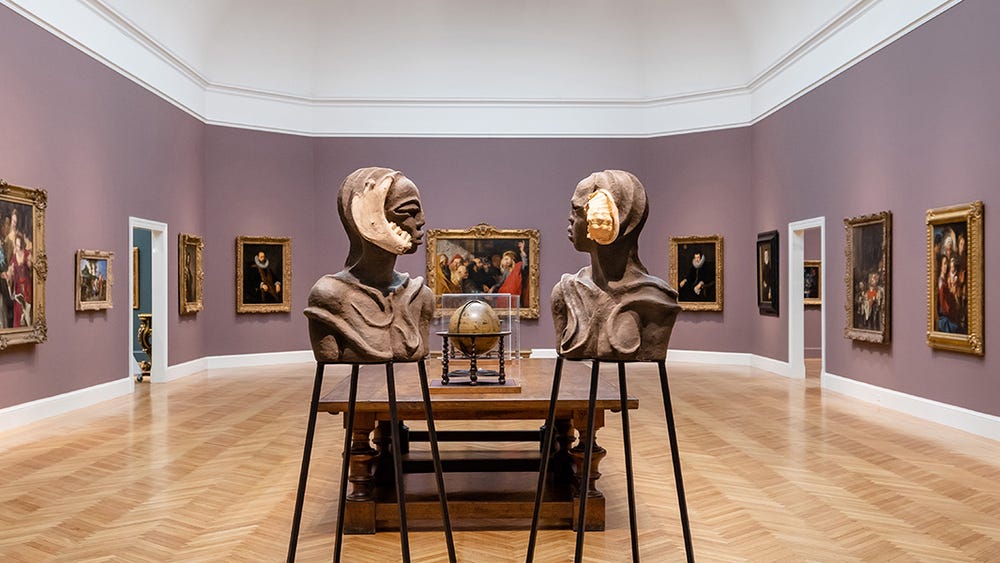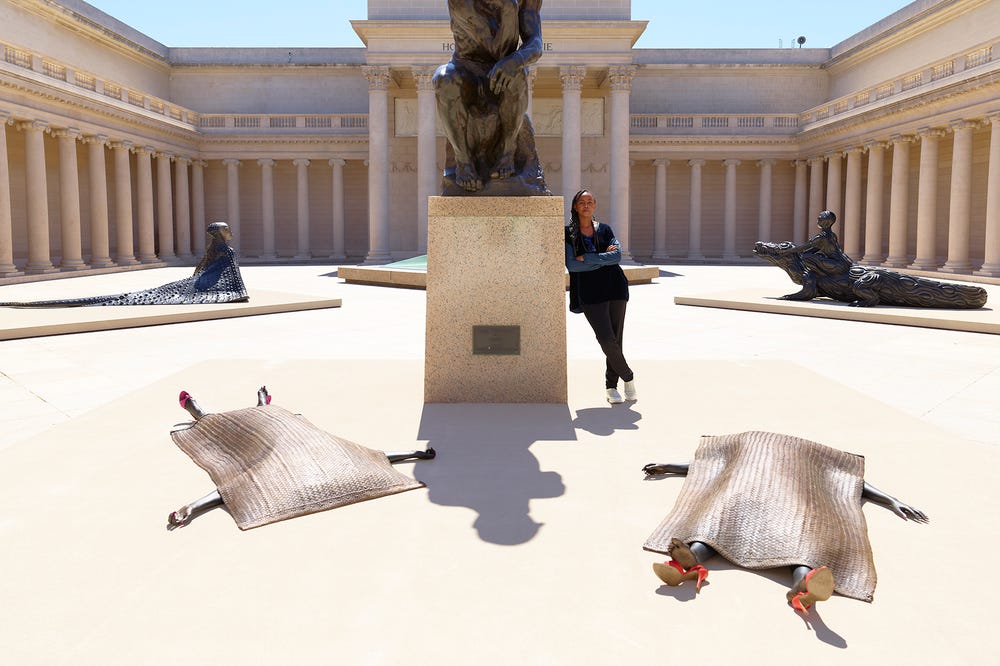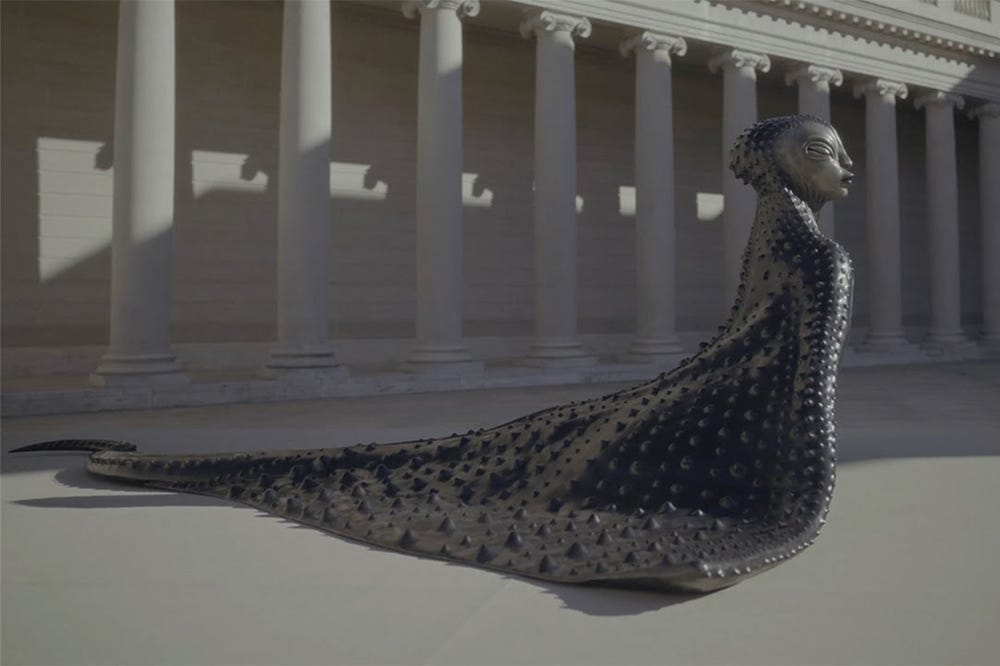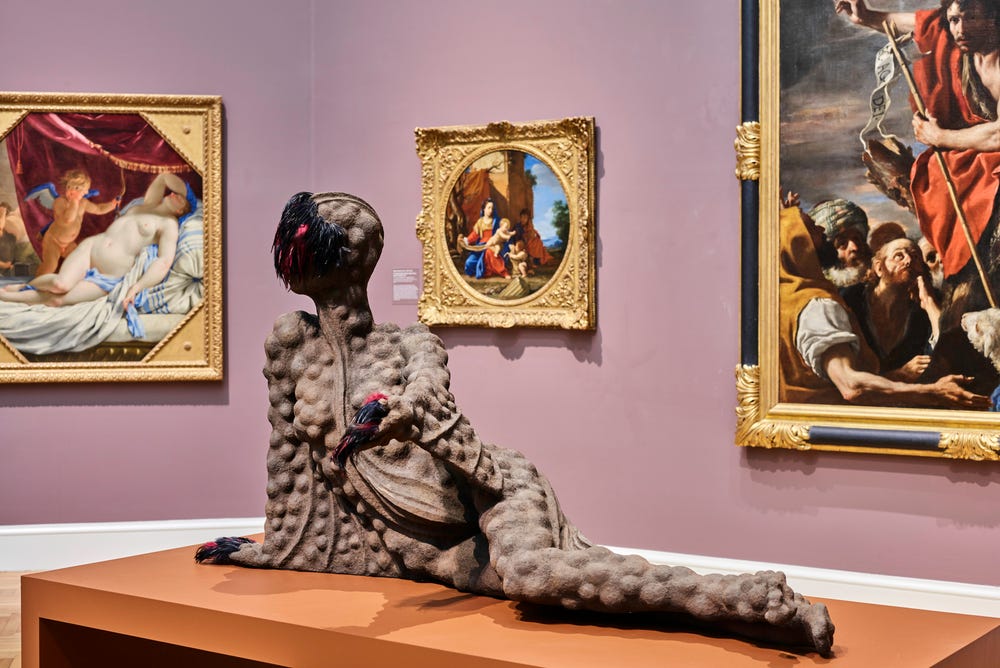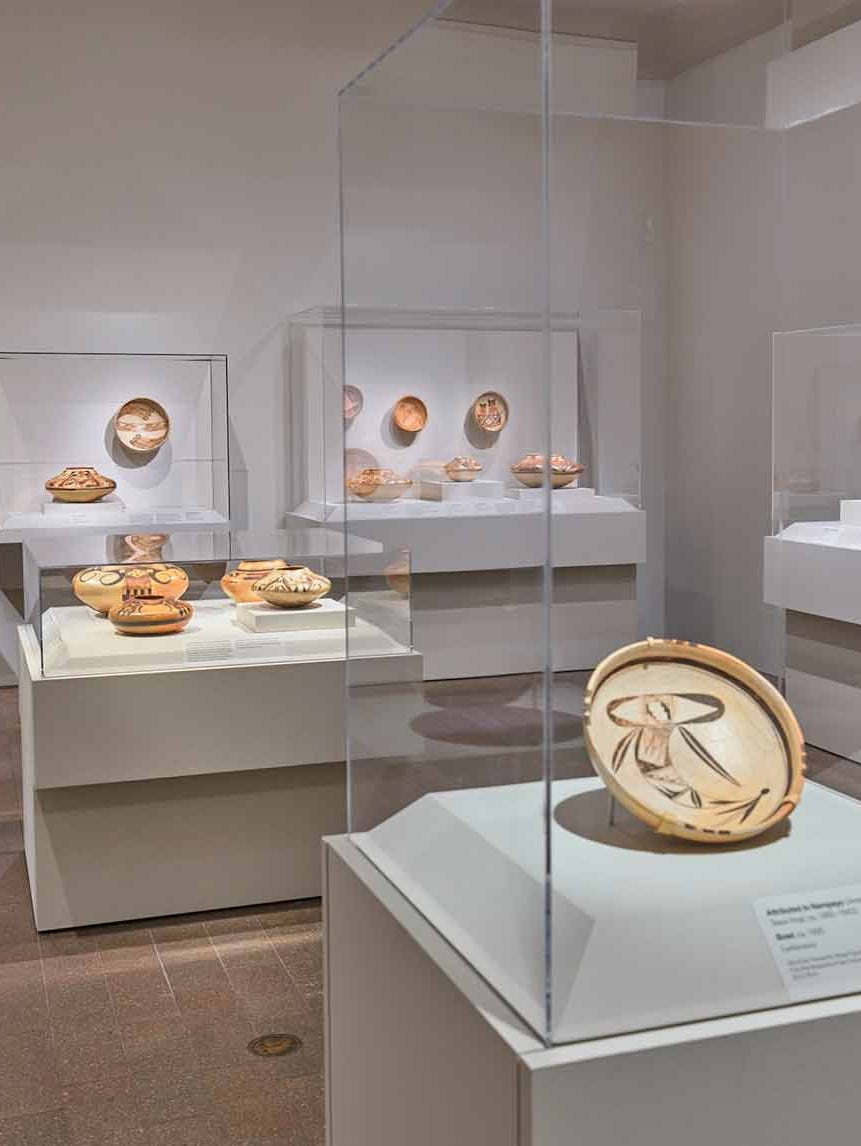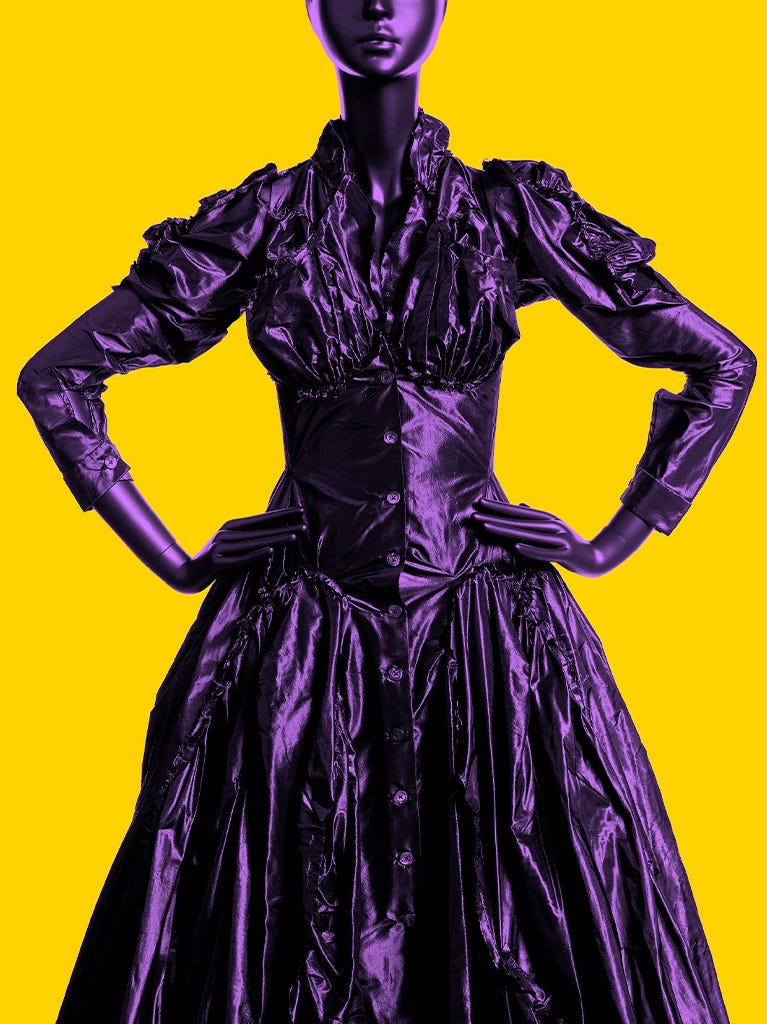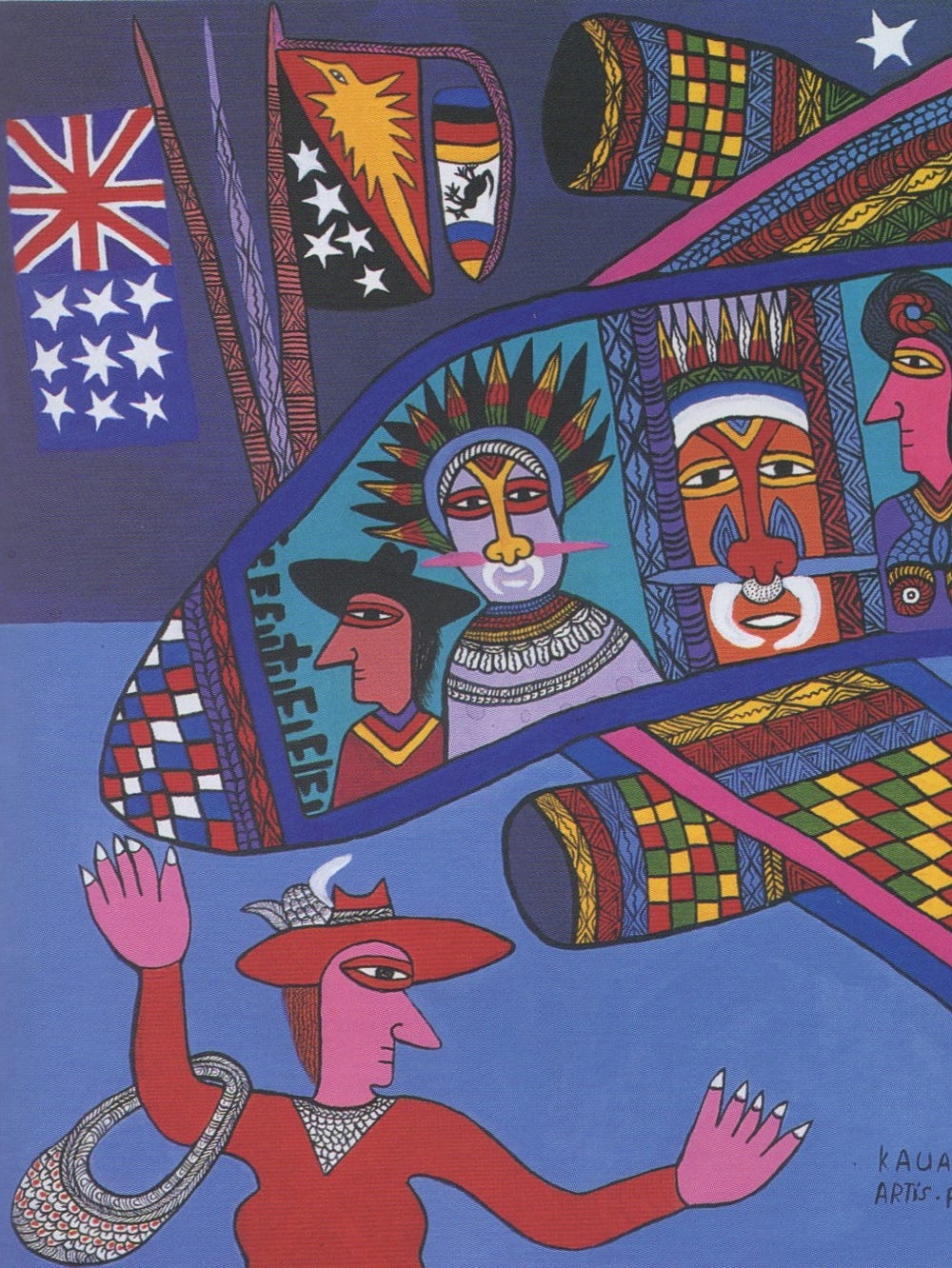Wangechi Mutu, I am Speaking, Can You Hear Me?, 2020 © Wangechi Mutu. All rights reserved. Courtesy the Artist and Gladstone Gallery, New York and Brussels. Photography by Gary Sexton. Images courtesy of the Fine Arts Museums of San Francisco.
Wangechi Mutu: I Am Speaking, Are You Listening?
Over the past two decades, Wangechi Mutu has created chimerical constellations of powerful female characters, hybrid beings, and fantastical landscapes. With a rare understanding of the power and need for new mythologies—the productive friction of opposites beyond simple binaries and stereotypes — Mutu breaches common distinctions among human, animal, plant, and machine. At once seductive and threatening, her figures and environments take the viewer on journeys of material, psychological, and sociopolitical transformation. An artist who calls both Nairobi and New York home, she moves voraciously between cultural traditions to challenge colonialist, racist, and sexist worldviews with her visionary projection of an alternate universe informed by Afrofuturism, post-humanism, and feminism. Mutu’s sprawling exhibition at the Legion of Honor, a museum built for the showcase of European art from antiquity through Impressionism presided over by Auguste Rodin’s The Thinker, aims to spur “a purposeful examination of art histories, mythologies, and the techniques of archiving and remembering.”
In depth
Mutu’s exhibition at the Legion of Honor, a museum built for the showcase of European art from antiquity through Impressionism and presided over by Auguste Rodin’s The Thinker, aims to spur “a purposeful examination of art histories, mythologies, and the techniques of archiving and remembering.” Disrupting The Thinker’s splendid isolation in the Legion’s neoclassical Court of Honor are two bronze Shavasana figures, limp blanketed bodies with polished nails and bright colored stilettos. Flanking The Thinker on either side “like a pair of powerful parentheses,” they both question and reframe the historical context of his creation — a sculptural monument to Dante Alighieri’s Inferno for which The Thinker was originally conceived — in terms of “the violence and bloodshed of colonial invasion and exploitation” as the often unacknowledged “hellish” subtext for “the stories of triumph and victory of the history and the art of the Western world.”
This pairing, and the tension it engenders, serves as a foil for Mutu to introduce a group of new works, including sculptures, collages, and a film that merge the histories, conventions, and traditions of her Western formation with those of her African origins. Alongside four bronzes, including Mama Ray and Crocodylus — two spectacular hybrid goddesses that are part animal, part woman, and part alien — she introduces sculptures made of soil, trees, ash, animals, and gems indigenous to the Kenyan landscape and reflective of formal techniques used in the making of traditional African sculpture, ornaments, battle shields, and protective talismans. According to Mutu, “These relationships and juxtapositions of different materials and symbolic languages, between human behavior and the natural world that have empowered us, describe the long history of creation and self-representation that has differentiated us from other creatures and from one another. It has also been the reason man has justified the rape, dominion, and destruction of all he has encountered.”
Dispersed throughout the galleries of the Legion of Honor, sculptures like I am Speaking, Can you hear me?; Mirror Faced; Outstretched; and Sentinel invite the viewer to contemplate the possibility of a world defined by understanding, care, and protection of both people and the planet. Acknowledging the enormity of the task ahead, Mutu’s new film features her in the guise of a horned mythic creature seeking wisdom from the bowels of a holy cave in the Rift Valley of Kenya. Her performance is both a dance and a prayer. In concert with her apse-like installation large strands of beads titled Prayers in the nave of the main Rodin Gallery, it gives shape to her belief in and love for the divinity of the earth, the power of woman, and the potential of art to bespeak and redress the injustices of this world. “It was René Descartes who said, ‘I think, therefore I am,’ right?” says Mutu. “So, it would therefore follow, ‘I am, because art makes my thoughts visible.’”
Stories
Film
Gallery
Sponsors
This exhibition is organized by the Fine Arts Museums of San Francisco.
Presenting Sponsor
Lisa & Douglas Goldman Fund
Major Support
Ford Foundation
Gladstone Gallery, New York and Brussels
Significant Support
Victoria Miro, London and Venice
The Fine Arts Museums of San Francisco’s Contemporary Arts Program is made possible by Presenting Sponsor the Lisa & Douglas Goldman Fund. Significant support is provided by The Harris Family and the Vance Wall Foundation. Additional support is provided by Joachim and Nancy Hellman Bechtle, Katie Colendich and Albert d'Hoste, Jeffrey N. Dauber and Marc A. Levin, Shaari Ergas, Katie Hagey & Jill Hagey in memory of their mother, Mary Beth Hagey, Ella Qing Hou and J. Sanford Miller, Kaitlyn and Mike Krieger, Lore Harp McGovern, Jessica and Jason Moment, Katie Schwab Paige and Matt Paige, Mr. and Mrs. Charles R. Schwab, David and Roxanne Soward, Gwynned Vitello, Zlot Buell + Associates, and the Contemporary Support Council of the Fine Arts Museums.
